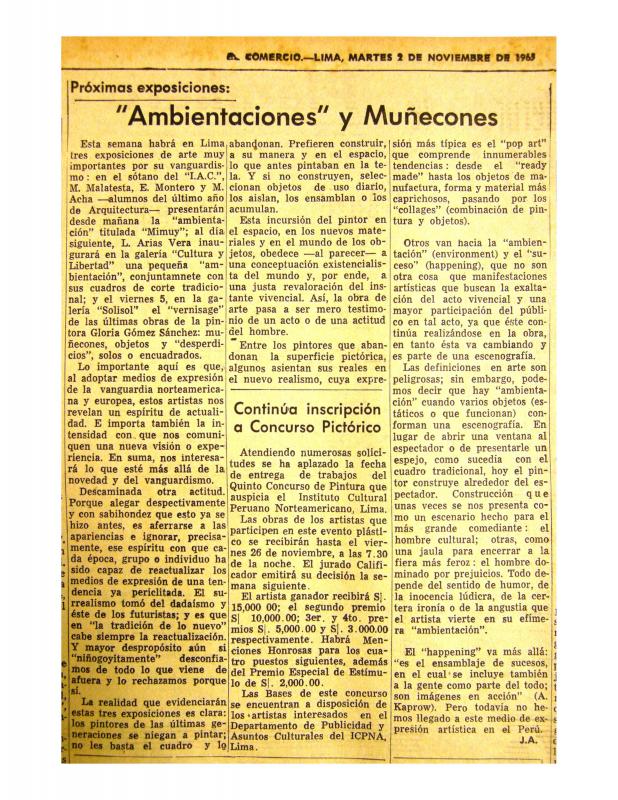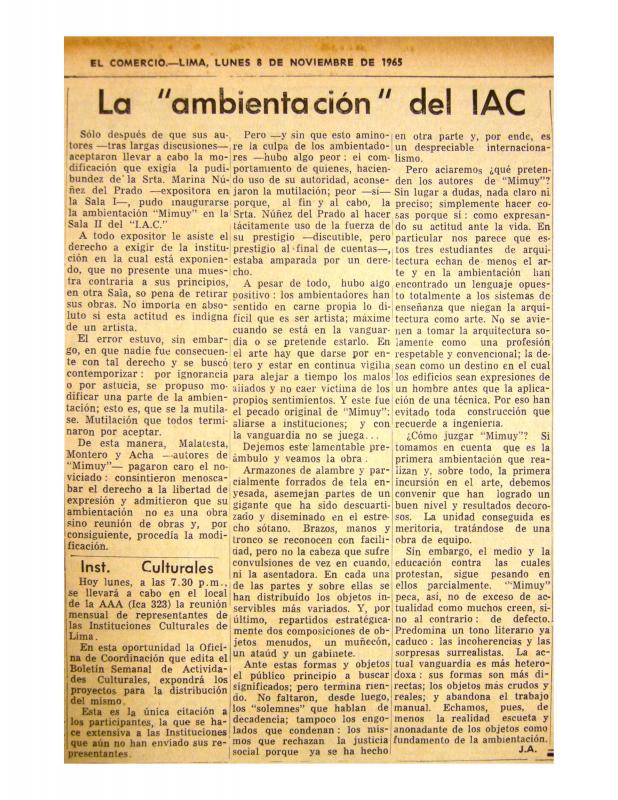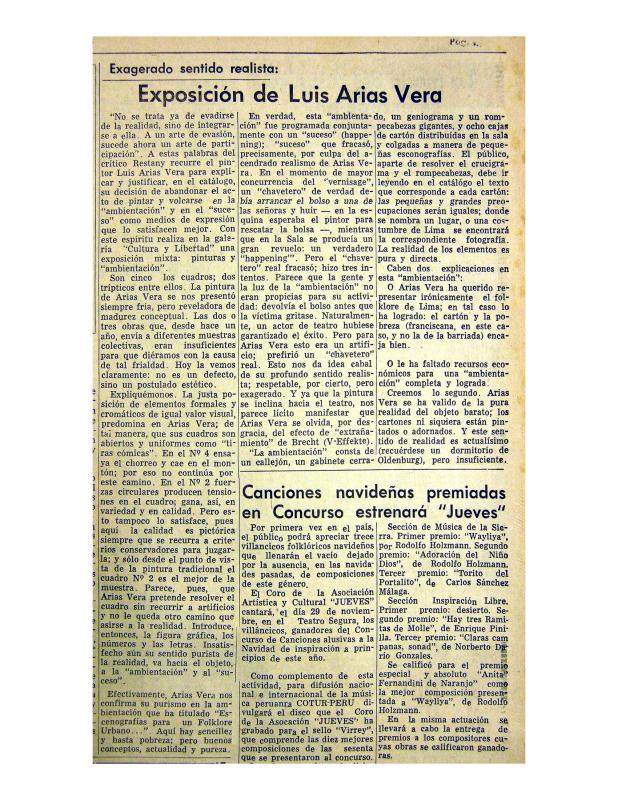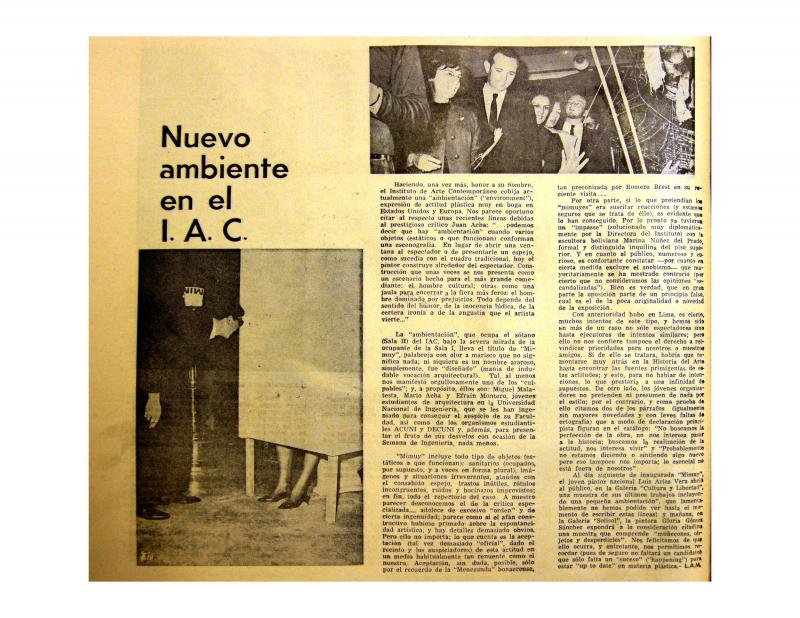In late 1965 in Lima three exhibitions opened that are now considered to be the earliest harbingers of installations and happenings in Peru. They were Mimuy, an installation by Mario Acha (the son of the critic Juan Acha), Efraín Montero, and Miguel Malatesta; Yllomomo by Gloria Gómez Sánchez; and Escenografía para un folklore urbano by Luis Arias Vera. Juan Acha promoted these experimental projects in his column in El Comercio, the influential Lima newspaper. Mimuy filled one of the most prestigious gallery spaces in the city with recycled objects. Arias Vera, at the Cultura y Libertad gallery, presented some paintings and a small installation. His event opened with a happening in which a thief stole an attendee’s purse but which the artist managed to retrieve. At the Solisol gallery, Gómez Sánchez presented a series of ephemeral works consisting of framed waste material and large dolls (“muñecones”) made of paper. The works at all these exhibitions clearly broke with traditional precedent in Peruvian art and provoked a backlash from the conservative press and critics. The reviewer’s open minded, unprejudiced attitude is surprising; Carvallo, an artist, writer, composer, and promoter of traditional art, who came up through the indigenist painting movement that began in the 1920s, defended these exhibitions.
[For additional information, see the following articles in the ICAA digital archive: by Juan Acha “Próximas exposiciones: ‘Ambientaciones’ y Muñecones” (doc. no. 1142445), “La “ambientación’ del I.A.C.” (doc. no. 1142493), and “Exagerado sentido realista: Exposición de Luis Arias Vera” (doc. no. 1142510); by Carlos Rodríguez S. “Mimuy” (doc. no. 1142462); and by Luis Antonio Meza “Nuevo ambiente en el I.A.C.” (doc. no. 1142478)].





